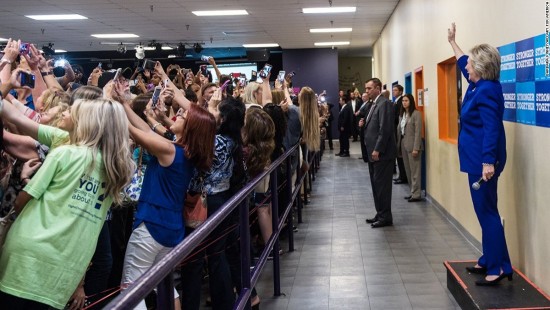
Corporate communications have changed. Press releases, internal communications or the sending of newsletters have given way to new concepts such as storytelling, new narratives, brand journalism, influencers and social media. A change which has come about in the space of under 10 years. Google is here to stay, and has turned technology and the world of communications on its head. As have Facebook, Twitter and all the other social networks. And so communications and journalism are evolving at 2.0 speeds, just like society.
In this sense, many articles have been published with recommendations on how to build a modern and up-to-date communications department (the agency Hotwire has a particularly interesting one). The European Communication Monitor 2016 recently published a report on current and future trends in corporate communication strategies, for which they interviewed over 2,000 relevant professionals in 40 countries. Key conclusions of the report are that corporate communication departments must be the driving force behind the use of Big Data; that the Internet, social networks and influencers must be given a high profile; and that it is important to have professionals with management skills. In this brief article I will not go into great detail on any of these aspects, which can be referred to in the report, but I will instead focus on three trends in communication which have already taken off and which will continue to be a talking point over the coming years.
The three trends in communication
Brand Journalism: brands become the means
The trend known as brand journalism emerged – as did journalism itself – in the United States. It is not a type of journalism as such, but rather a trend in corporate communications which seeks to apply journalistic principles. One of the most disruptive examples in recent years is the case of Coca Cola. From the traditional corporate web page, it has moved to a wider broadcasting of information with its “Coca Cola Journey”: a site which brings together key news items from the food sector, as well as innovation and sustainability issues; a site which clients, journalists, analysts and influencers can consult on a daily basis in search of the latest developments.
In this case, the company has changed its marketing strategy from “push” to “pull”. Coca Cola’s own corporate department has taken a step back, as a resource for specific queries rather than a source of general information. Many other companies are bucking this trend. Most recent and significant cases in Spain are bbva.com, Eroski Consumer’s bid to reach end users, or sites such as that of Ferrovial itself.
Storytelling: when arts win over science
Another term that’s here to stay is storytelling: the art of telling stories with texts or images. Brands are increasingly moving away from traditional methods for selling their products or services, and moving closer to creative storytelling with the aim of creating an emotional link with the client. In this playing field, words and images are the main characters, and help to boost numbers and statistics. As examples of successful campaigns, Mercedes and its #Persiguetuestrella (Follow your star), featuring movie shorts with actress Maribel Verdú or chef David Muñoz; or #Pequeñascosas (The small things) by beer brand Estrella Damn. For Nathalie Picquot, Google’s Head of Branding: “technology is nothing without the story behind it”.
Big data: data is creeping into Communications
Data analysis is what companies are looking to for help in taking better business decisions. You search for data, cross-check the data, analyse it, and reach conclusions which result in better margins. But data is also creeping into the world of communications. According to the European Communication Monitor (ECM), data analysis will soon be critical in communication departments: 70% of those surveyed for the report believe that big data will change their profession; however, only 20% of organisations have put in place any relevant initiative. María Ángeles Moreno, lecturer at the King Juan Carlos University in Madrid and a member of the ECM, explains that “knowing how to integrate data analysis still poses a challenge, as does how you obtain information that really allows communications to add value to the organisation”. But it will no doubt be a tool which will be integrated in all communication departments in the medium term.
Big Data, storytelling or brand journalism are but a few examples of trends which are pushing their way into the communications sector, and which we, as journalists, are incorporating into our daily lives. We have moved from using text in Word, a telephone and email, to managing social networks, because breaking news today all comes about by hashtag. The message is clear: reinvent yourself, or risk becoming redundant. Welcome to a digitally transformed world!






There are no comments yet